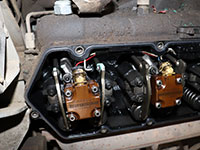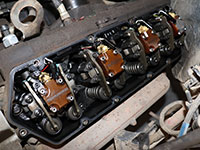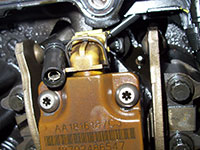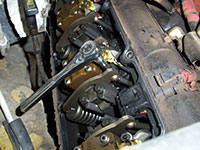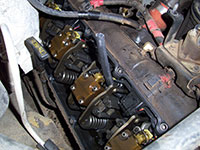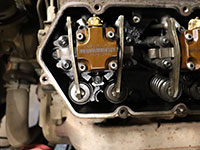Applicable Models:
1994.5 - 1997 Ford F-250, F-350, F-Super Duty
1999 - 2003 Ford F-250, F-350, F-450, F-550 Super Duty
2000 - 2003 Ford Excursion
1995 - 1999 Ford Econoline E-350
2000 - 2003 Ford F-650, F-750
2000 - 2003 Econoline E-350, E-450, E-550
Applicable Engine(s):
7.3 liter Power Stroke V-8 (7.3 DIT)
The 7.3 Power Stroke employs a traditional glow plug system to increase the combustion chamber and intake air charge temperature during the start-up sequence. The glow plugs may also briefly power on after the engine has been starting, depending on ambient conditions. Engine starting, especially after a cold soak, is both more efficient and swifter with lower emissions as a result of the heat generated by the glow plug system.
If the ambient temperature is low enough, an engine will not start without a properly functioning glow plug system as the air charge compressed in the combustion chamber may not reach and maintain auto ignition temperature. A glow plug system that is not functioning correctly may also contribute to heavy smoke while the engine is cranking and excessive crank times may be required to generate enough heat in the combustion chamber to permit auto ignition of the fuel charge.
Glow Plug System Overview
A glow plug is nothing more than a resistive heating element that functions in a manner no different than that of those found in household appliances - electric ovens, dryers, and water heaters for example. As the result of the resistance across the device, they convert the flow of electrical current into heat. Glow plug cycle times are determined by the PCM based on engine oil temperature and barometric pressure readings. If the engine oil temperature is above a certain threshold, the glow plugs may not cycle at all.
Most 7.3 Power Stroke engines utilize a simple, PCM commanded relay to activate the glow plug system. This relay is no different in appearance nor operation than a standard starter motor relay and is mounted to the top of the engine near the passenger side valve cover. When the relay is activated, the glow plugs receive power and generate heat. This simple system provides limited diagnostic communications to the PCM.
For the 1999.5 model year update, a glow plug control module (GPCM) replaced the glow plug relay on all trucks with the California emissions package. This same glow plug control module would be employed by the 6.0 and 6.4 Power Stroke engines. In addition to activating the glow plugs, it provides various diagnostic functions that communicates more detailed system faults to the PCM. This includes the ability to generate DTCs for opens and shorts in the glow plug wiring harness.
There is (1) individual glow plug for each cylinder for a total of (8) glow plugs in the system. The glow plugs are mounted through the cylinder head with the tip protruding into the combustion chamber. The wiring harness is incorporated into the under valve cover harness (UVCH), which supplies power to each glow plug and fuel injector for that bank of cylinders. A pass-through connector molded into the valve cover gasket provides the connection between the UVCH and engine wiring harness.
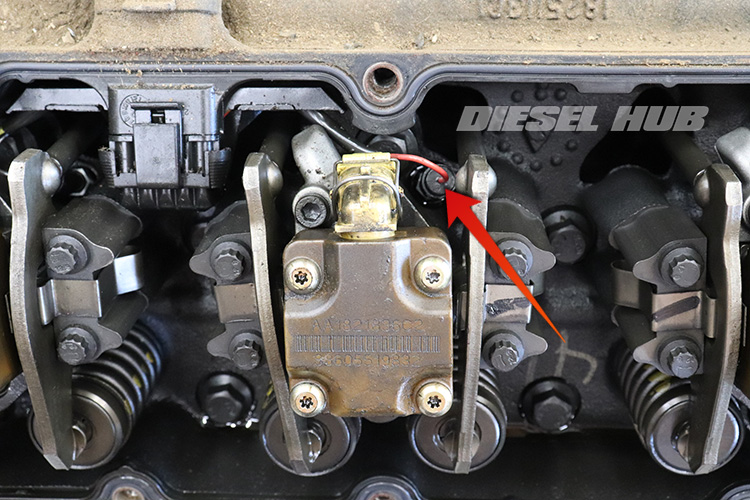
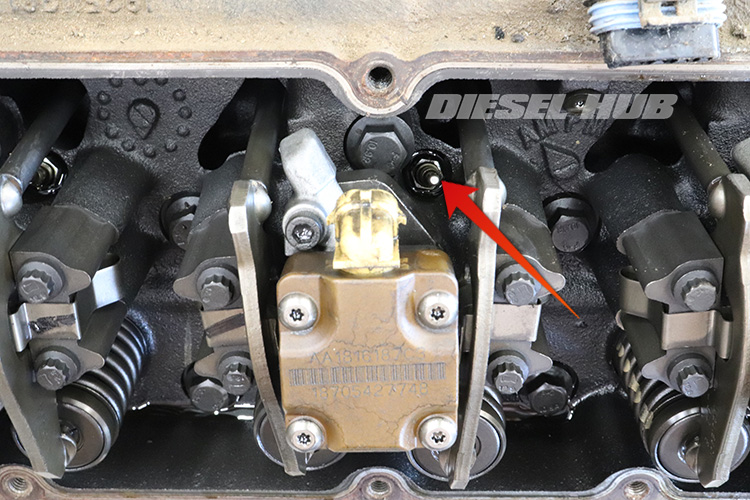
Symptoms of a Glow Plug System Fault
Symptoms of a malfunction in the glow plug system include hard start (long crank) and no start conditions, generally with large amounts of white smoke. The presence of white smoke signifies fuel is being injected into the cylinder, but is not igniting and is instead exiting the tailpipe as an atomized fuel-air mixture. Black smoke may also be presence in short bursts as the engine is cranking, a sign that at least one cylinder is intermittently generating enough hit to permit at least partial ignition. A clicking glow plug relay or controller (device is activating and deactivating rapidly) is also indicative of a problem with the glow plug system. Comprehensive glow plug system diagnostics are available here: 7.3 Power Stroke glow plug system tests.
Glow Plug System Parts
| Component Description | Part Number | Remarks | |
|---|---|---|---|
| Glow plug | Motorcraft ZD-30 | [1] | |
| Glow plug relay | Motorcraft DY-861 | [2] | |
| Glow plug control module (GPCM) | Ford YC3Z-12B533-AC | [3] | |
| Glow plug harness (UVCH) | 1994 - 1997 | Ford F4TZ-9D930-K | [4] |
| 1999 - 2003 | Ford F81Z-9D930-AB | ||
| Valve cover gasket | 1994 - 1997 | Ford F4TZ-6584-A | [5] |
| 1999 - 2003 | Ford F81Z-6584-AA | ||
[1] - Motorcraft ZD-30 supersedes previous ZD-11 part number; glow plugs should be replaced in full sets of (8)
[2] - All 7.3 Power Stroke engines except 1999 and newer with California emissions package
[3] - 1999 and newer engines with California emissions package only; 1999+ engines with 49 state emissions use relay, not GPCM
[4] - Glow plug/fuel injector harness housed beneath valve cover
[5] - Gasket incorporates a pass-through connector for wiring harness
Motorcraft ZD-30 Supersedes ZD-11
Between 2021 and 2022, Ford Motor Company changed the part number for the 7.3L Power Stroke diesel glow plugs from ZD-11 to ZD-30. ZD-11 and ZD-30 glow plugs are identical, but the ZD-30 part number supersedes ZD-11 moving forward. Expect ZD-11 glow plugs to remain readily available for some time until all the inventory is sold and replenished with those bearing the superseded part number. There is no difference between the two parts; they simply have different part numbers. The full Ford part number for a Motorcraft ZD-11 glow plug is F4TZ-12A342-B. The full Ford part number for a Motorcraft ZD-30 glow plug is MC3Z-12A342-F.
Counterfeit Glow Plug Warning
Motorcraft and Ford part counterfeiters have become increasingly crafty and the volume of counterfeit auto parts in seemingly genuine Ford and Motorcraft packaging has increased exponentially in recent years. Genuine Motorcraft ZD-11/ZD-30 glow plugs are high on the list of counterfeit OEM products and various marketplaces are absolutely littered with these fake products. While they are relatively easy to spot, most consumers don't look twice past the very convincing packaging.
In terms of quality, these counterfeit glow plugs are absolute junk, manufactured from low quality materials with minimal, if any quality control standards. The color of the metal alloy alone should indicate that these are nothing more than knock-offs. Can you spot the counterfeit packaging in figure 3 below?
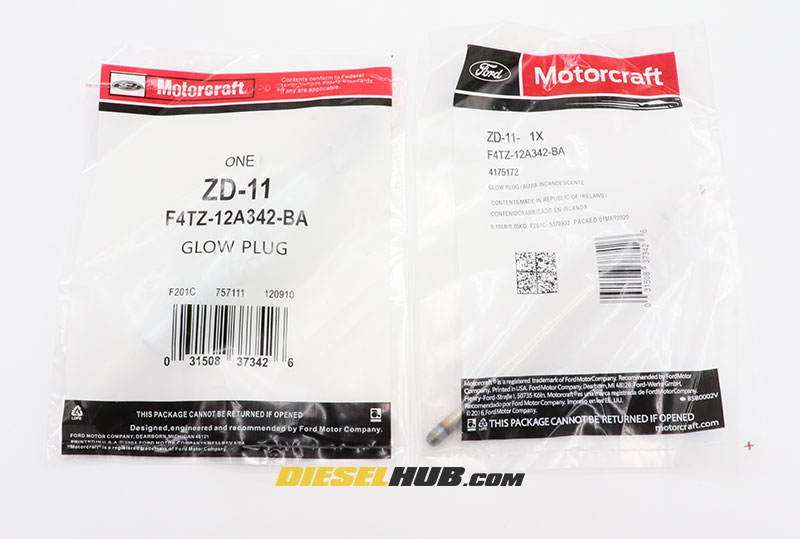
The package on the right is an authentic Ford part in authentic Motorcraft branded packaging while the package on the left is indeed a low quality counterfeit purchased on the popular eBay. These counterfeits were purchased at roughly half the price that out trusted Ford parts distributor was selling them at time of publishing. Indeed the packaging, although slightly different in style, is extremely convincing without an authentic package to compare it to. And at the half the price? Who wouldn't jump at that bargain.
So how can you spot a counterfeit glow plug? It's actually quite easy, as counterfeiters may have mastered the packaging but their low quality parts are easy to spot. Additionally, it's significantly easier for them to mimic the packaging than it is the actual laser etching on the body of the glow plug. Figure 4 below displays three glow plugs; one is authentic, while the remaining two are not (all three were delivered in sealed Motorcraft branded packaging).
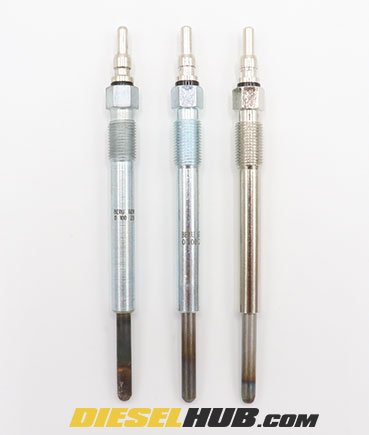
The glow plug on the left is a genuine Ford part while the center and right hand products are counterfeits. Note that we have three different metal alloys resulting in three slightly different colors. Additionally, the thread lengths on the two counterfeits are longer than that of the authentic glow plug. Most importantly, however, is the text and numbers laser etched into the body of the glow plug. The glow plug on the right has none, an obvious sign that it is indeed fake. Figure 5 below displays a closer view of the glow plug etching.
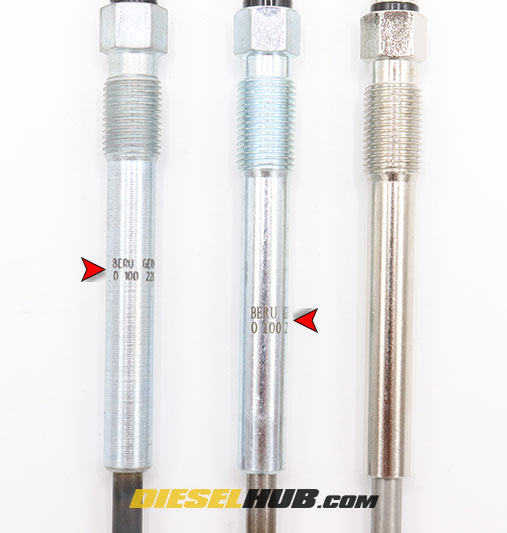
A genuine Motorcraft ZD-11/ZD-30 glow plug will have the words "BERU GERMANY" or "BERU IRELAND" laser etched onto the body in a sans-serif robotic type font (editor's note - we don't really see the "BERU IRELAND" glow plugs being distributed anymore, but these were common at one time). Although the counterfeit has the same text and numbers, the font is entirely incorrect and appears cheaply printed, not etched. For some reason, the Chinese counterfeiters seem to be fond of common serif fonts (think Times New Roman).
Returning to the subject of packaging, ALL Motorcraft parts that are packaged in plastic packaging have a unique feature in common - a small vent hole that is not punched entirely through. Figure 6 provides a closeup view of this vent hole.
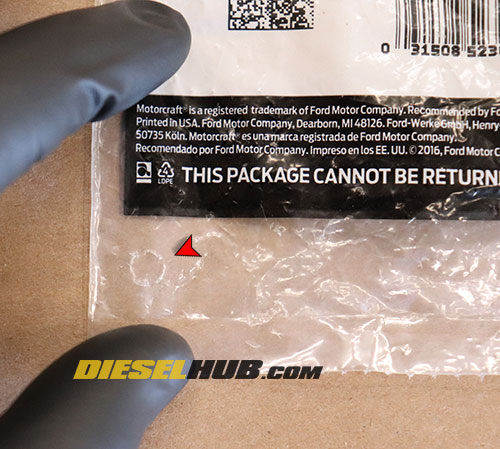
The hole resembles a circle with four perforated arches or four perforated 60 degree semi-circles (roughly). The vent hole is not always present in the same location, but is always present somewhere on the packaging. At times, it is even difficult to find. However, counterfeiters are likely to pick up on this detail in the future so we recommend resorting to an inspection of the actual product and not relying solely on this information.
Not only is purchasing imported counterfeit goods harming honest businesses in the United States, but the quality of such products is extremely poor and you don't know what you're actually getting. If the product was, for the sake of argument, at least decent, why would the manufacturer need to mislead buyers? Glow plugs are subjected to extremely high temperatures and must resist oxidation under such conditions. Cheap glow plugs are well known for swelling, the tip breaking off and dropping into the combustion chamber, and/or breaking off in the cylinder head. In summary:
- Be weary of ultra-low prices, marketplace sellers located outside of the United States, and listings that advertise "ships from USA" or "USA seller".
- Verify the authenticity of product and packaging using the tips above. If in doubt, pull a glow plug from your vehicle and compare it to the new replacements.
- Look for "BERU GERMANY" etched on all Ford/Motorcraft glow plugs.
- Purchase through a trusted seller.
How to Replace the Glow Plugs on a 7.3 Power Stroke Engine
Click any thumbnail to view fullsize, detailed image
- Disconnect both negative battery cables.
- Remove the passenger and driver side valve covers. For detailed guidance, see 7.3 Power Stroke valve cover removal procedures.
- Disconnect each glow plug connector. The glow plug use a single terminal, bullet style connector located beside each fuel injector connector. There is no detent on the glow plug connectors, simply pull upwards to remove. If necessary, needle nose pliers or a connector removal tool can be useful in disconnecting them as they can be difficult to grasp without pulling on the wire.
- Position the glow plug connector/wire away from the glow plug so that it is accessible.
- Locate the glow plug between the fuel injector and adjacent rocker arm/pushrod (reference image if necessary).
- If desired, each fuel injector can be disconnected and the entire valve cover gasket/harness assembly can be removed from the engine compartment.
- Loosen each glow plug with a 1/4 inch drive, 10 mm deep socket and 4 to 6 inch socket extension.
- The glow plug cannot be unthreaded entirely with the ratchet because the socket will become wedged on the adjacent rocker arm after a certain threshold.
- Slide a roughly 6 inch section of 1/4 inch fuel hose over the glow plug terminal. Use the fuel hose to unthread the glow plug completely and remove it from the cylinder head. If the hose just spins on the glow plug terminal, loosen it a few additional turns with the socket.
- Install the new glow plug in reverse order, hand threading it with the fuel hose first then snugging it with the ratchet and socket. Repeat for the remaining glow plugs.
- Take extreme care not to drop any tools, debris, or other foreign materials into the cylinder head.
- Torque all glow plugs to 124 in-lbs and then reinstall the electrical connector.
- At this time we recommend that the rocker arm pedestal and injector hold-down bolts are torqued; both are known to back off and lose torque over time.
- Torque each injector hold-down bolt to 120 in-lbs with an 8 mm socket.
- Torque each rocker arm pedestal bolt to 240 in-lbs with an 8 mm socket (12 point socket required on some engines).
- Reinstall the valve covers and check for proper glow plug operation.
